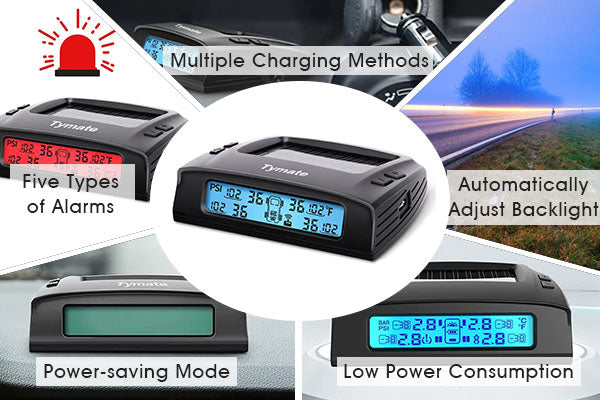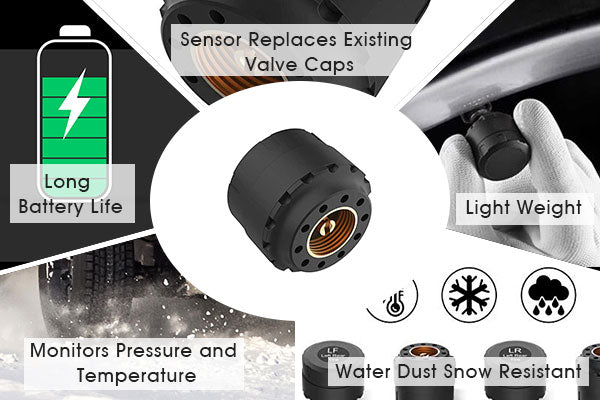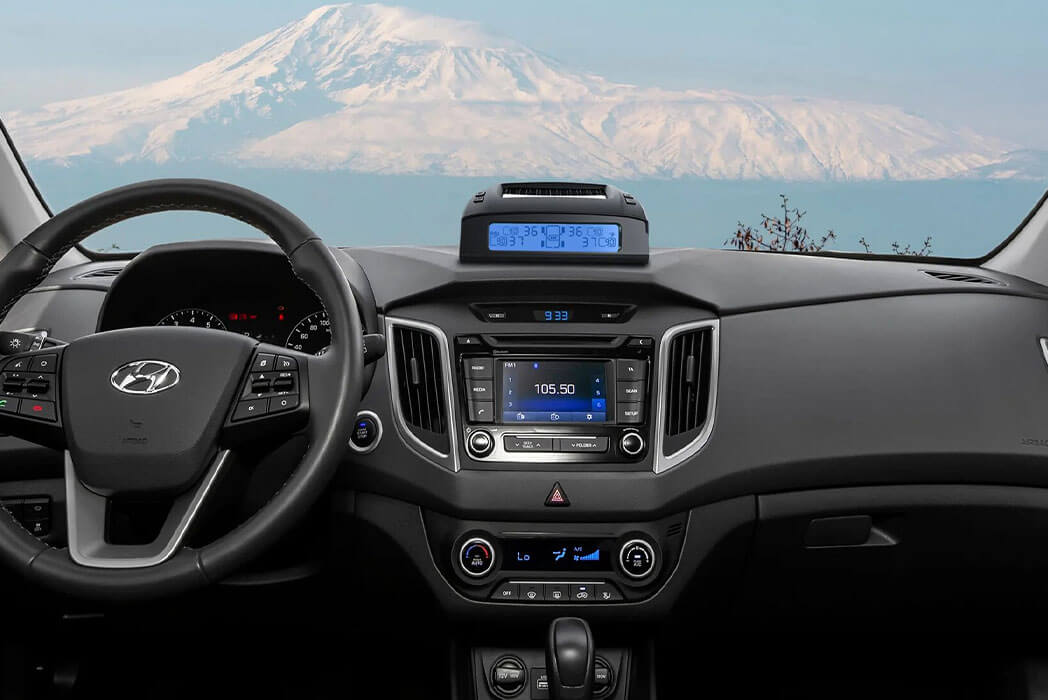
A Tyre Pressure Monitoring System on your vehicle is a safety feature nowadays. Plus, newer vehicles due require it by law. This will help drivers recognize the importance of tire pressure safety and maintenance.
Maintaining the correct tire pressure for a vehicle is crucial in how much load it can safely carry. You are in the right place if your car does not have a TPMS. This guide will help you to get all the required information before doing anything with your tires.
The basics of TPMS
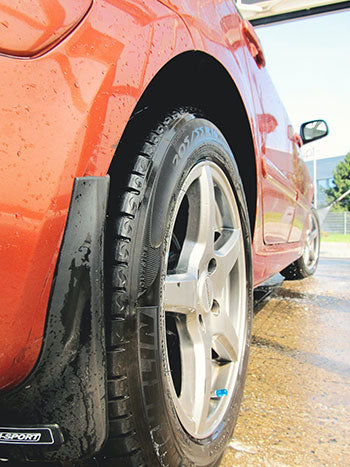
A tire pressure monitoring system is an electronic system that monitors the air pressure inside each tire of a vehicle. A TPMS can be installed in large trucks, passenger cars, SUVs, or motorhomes.
The TPMS reports real-time tire pressure information to the driver. The data is described via a gauge or a warning light. If you install a monitor, you might receive that information in one or several modules in your vehicle.
You can preprogram the modules to your specific pressure requirements, and it will alert you to any out-of-range. TYMATE TPMS also has the extra feature to detect if the temperature is out of range or if there is a leak.
Types of TPMS
There are two main types of TPMS monitors.
Indirect
This sensor works hand in hand with your car´s ABS wheel speed sensor. The way it works is when your pressure is low, your wheel speed will decrease, and this will turn on a light on your dashboard.
This monitor compares the rotation speed of one tire with another on the vehicle. If a tire has low pressure, the circumference changes to the extent that it differs from the rest. As a result, a light in the vehicle’s dashboard will turn on and warn the driver.
However, these monitors will not tell the driver which tire is low on pressure. As well as not warning in case the four tires are losing pressure. Additionally, they might give false warnings if you are driving on wet, icy, and snowy roads.
Direct
This TPMS is a mounted sensor in the wheel. It also needs to be mounted on each wheel to measure the pressure from each tire. Because of this, they generate accurate warnings and alert the driver immediately if the pressure is lower than the 25% manufacturer´s recommendation level.
They can even detect the gradual loss and come with an added monitor indicating which tire is low on pressure. The pressure sensor is inside the tire´s air chamber, and signals are transmitted to the in-car receiver and displayed to the driver.
Factors to Consider When Choosing a TPMS

Before purchasing any TPMS monitor, you need to consider the following factors.
Vehicle compatibility
Check first if your car still needs to be equipped with a TPMS system. When the key is turned to the “on” position, a warning light will appear on your dash to know if you have it installed.
If it isn´t, you must know that most sensors are vehicle specific. This means you will need a TPMS sensor according to the car’s number of tires. The same rule applies if you have a car and a motorhome. Even though the motorhome will not be attached to the vehicle 24/7, it is safe to install them.
Display and user interface
If you purchase a TPMS monitor, you might question how to read the monitor. TYMATETPMS monitors have a large screen displaying up to 10 tires’ data on one page. The display will automatically switch between the front trailer and rear sections.
It is user-friendly. You will see your entire vehicle and the pressure on each of them displayed on the screen. The display will also alert for any low battery, leakage, or temperature change on any tire.
Battery Life and Maintenance
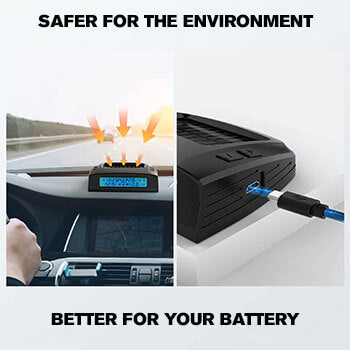
The estimated battery time for your monitor is an estimated 14 days if fully charged. The monitor goes into power saving mode if no motion or vibration is detected in 15 minutes to save the battery.
You need to make sure to keep the monitor inside the car and not to expose it to long hours of sunlight to avoid overheating. Checking the sensors is always an advice we encourage our customers to do.
In regards to the sensors, corrosion is the main issue that can affect their life span. Exposure to road salt and moisture promotes galvanic corrosion that weakens the metal valve stem.
Sensor check and recalibration
It’s recommended that your tire pressure be checked once every month. While you can rely on your tire pressure monitoring system to alert you of any issues, we recommend that you check the pressure yourself as well. This is because of temperature fluctuations, and if you haven´t checked your sensors and see if they work properly.
In case you find some variations, you can recalibrate your sensor. If you already have a sensor installed in your car, you can watch this video that can give you more specific directions.
Reminder: the video is done for cars that have an indirect TPMS sensor.
Cleaning and protecting components
Most TPMS sensors will have their aluminum stem unprotected. With GUTA, they are always covered and will protect the stem from any direct dust or water contact it may have. However, it is crucial you clean the caps and check for any damage that they may have.
Do not clean it with water and dish soap. This can be your sensor´s worst enemy. As well as, different air humidity levels might give a false alarm to your monitor. Having it clean and dry and check regularly is vital for a longer life expectancy of your device.
TYMATETPMS SENSORS
Our company only designed three types of TPMS monitors. Within the group of solar and USB charger you can fin the same monitors. We considered that in case of an emergency, you can always charge your monitor with your USB. However, if being more green is your life goal you have this option as well.
We decided to not make more, since we focus on quality instead of quantity. We will give a brief description of each sensor.
Tymate Tire Pressure Monitoring System with Solar or USB charge

It is our best seller—ideal for passenger cars and even school buses and RVs. It features both solar charging and and USB charging system.
It is equipped with a repeater, and 6 alarm modes. Fast leak alarm, slow leak alarm, high pressure alarm, high temperature alarm, sensor fault alarm and sensor battery low power alarm, keeping your driving safe.
Tymate TPMS Tire Pressure Monitoring System

With its large HD screen size monitor, you will have a clear and visual appearance. It comes with four alarm types providing promptly information about your tires condition.
It is ideal for medium size cars and you charge the device with your car´s cigarette lighter. Making it easier and more practical for its performance.
Final thoughts
While the legislation is well intended, direct tire pressure monitoring systems are better to warn the driver of low tire pressure before inconvenience becomes a calamity. Additionally, we are concerned that the drivers of vehicles equipped with any tire pressure monitoring system will become overconfident in the capabilities of their system.
Purchasing the ideal TPMS system for your vehicle will give you that extra peace of mind while driving. If you have any more questions about our monitors, you can chat or email us any queries you might have.

